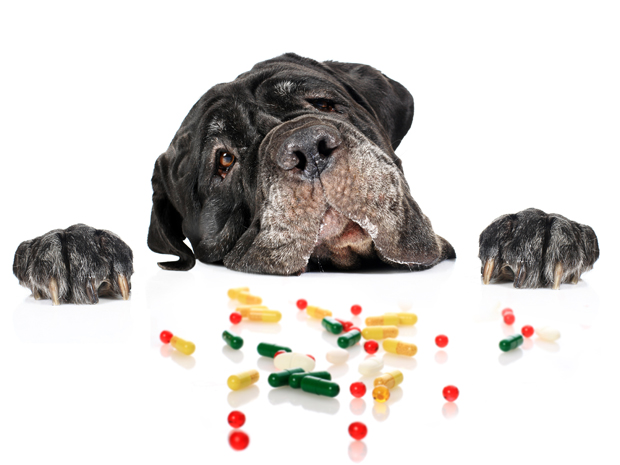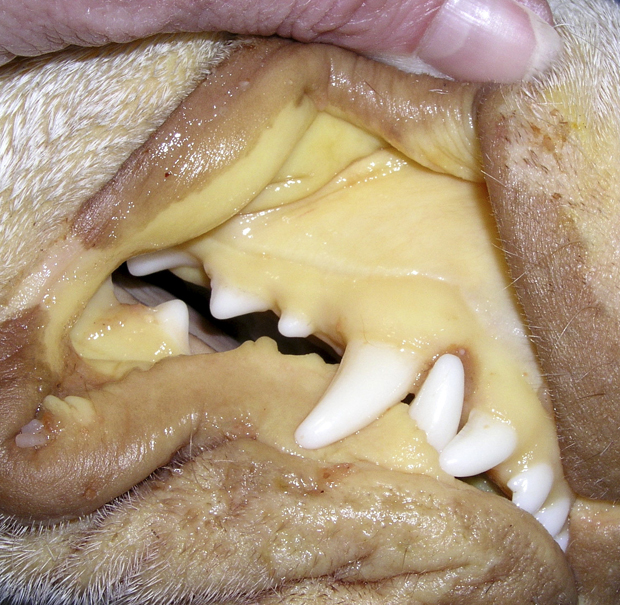
Photo by Fantasista
Acetaminophen is a commonly used aspirin-like drug used in people for its pain and anti-inflammatory properties. It is used in many over-the-counter (OTC) medications like Tylenol as well as Exedrin and Nyquil, in which it may be combined with other medications.
This drug can be given to dogs when used at a proper dose, although there are many new anti-inflammatory drugs used in dogs that are more effective and with less chance of side effects, so we do not recommend acetaminophen any longer.
The primary source of toxicity in dogs and cats is an overdose from chewing into bottles that contain acetaminophen or finding pills on the ground. One regular strength (325mg) tablet is enough to cause a problem.
Symptoms of acetaminophen toxicity include the following:
- Lethargy, depression or coma
- Vomiting or diarrhea
- Swelling of the face or paws
- Difficulty breathing
- Brown or yellowish gums
- Brown or dark urine
- Death

Yellowish gums in an animal may indicate acetaminophen toxicity. Photos courtesy of Long Beach Animal Hospital (LBAH).
If the acetaminophen your pet ingested is combined with another drug that contains caffeine or antihistamines, there are other symptoms that may occur:
- Ataxia (walking like a drunken sailor)
- Agitation
- Tremors
- Seizures
Cats are very sensitive to acetaminophen toxicity, so it must never be given to cats. They get a specific form of toxicity called methemoglobinemia that destroys their red-blood cells in addition to causing liver problems.
A tentative diagnosis is made on a pet with the above symptoms by running a complete blood panel and urinalysis. There will be clues as to this toxicity in these tests, although they do not give a definitive diagnosis. A measure of the oxygen saturation of the red-blood cells can be determined using a pulse oximeter.
An acetaminophen toxicity test needs to be run to make a definitive diagnosis. This is a specialized test that takes time to come back from the lab, so when we have a pet with suspected acetaminophen toxicity, we treat for it as a precaution and do not wait for this test, if we even run it.
If your pet is brought to us within a short time after ingestion, we will induce vomiting or give activated charcoal. Since acetaminophen can be absorbed within 30 minutes of ingestion, this needs to be done soon after your pet ingests it.
Treatment is multimodal, addressing any symptoms found during an exam. These may include hypothermia (low body temperature). Intravenous fluids are routinely given. Additional treatment that might be needed includes 100 percent oxygen, vitamin C, a drug called N-acetylcysteine, and an amino acid called cysteine. Milk thistle and s-adenosly-methionine might be used to help protect the liver also.

Intravenous fluids administered using a precise instrument is a crucial part of treatment.
The best treatment for this problem is prevention, because by the time a pet owner notices any symptoms of acetaminophen toxicity and brings their pet in for an exam and treatment, the liver has already progressed to the failure stage.

